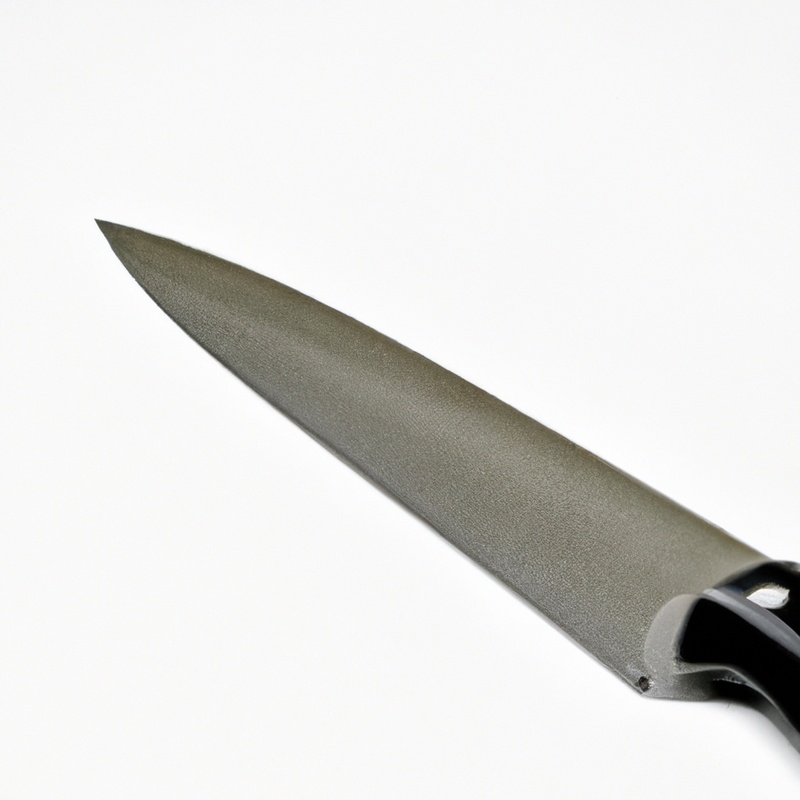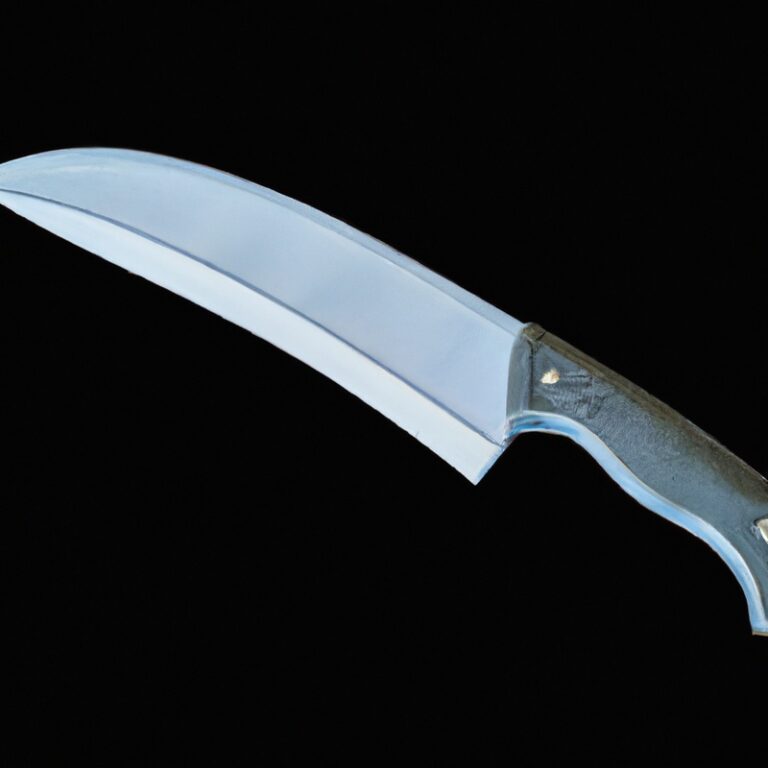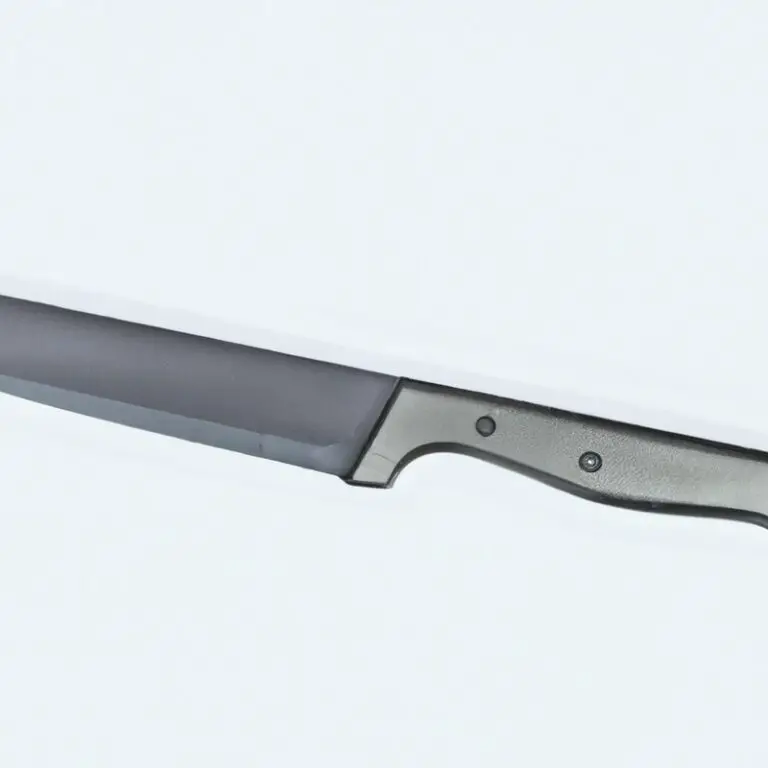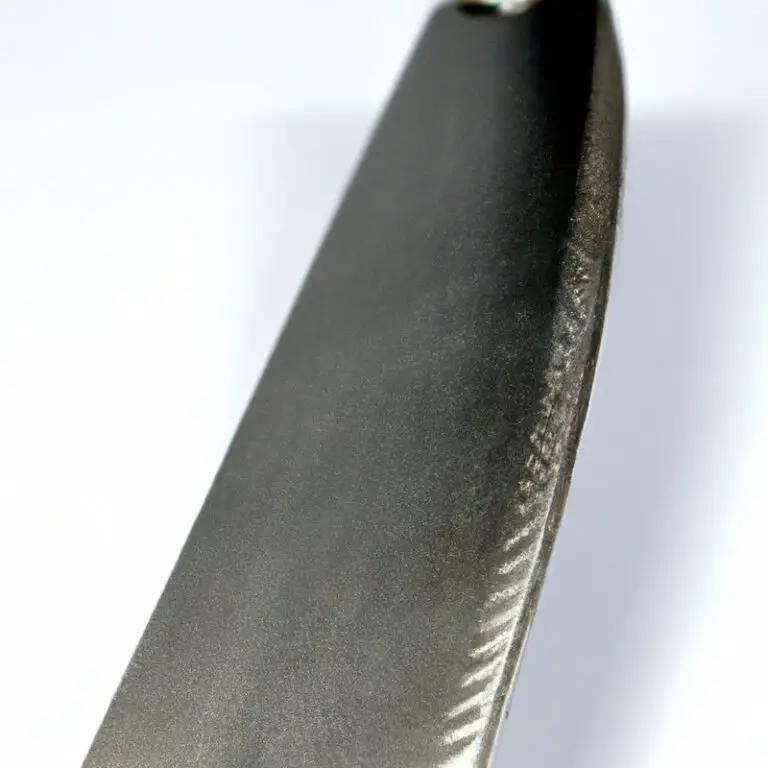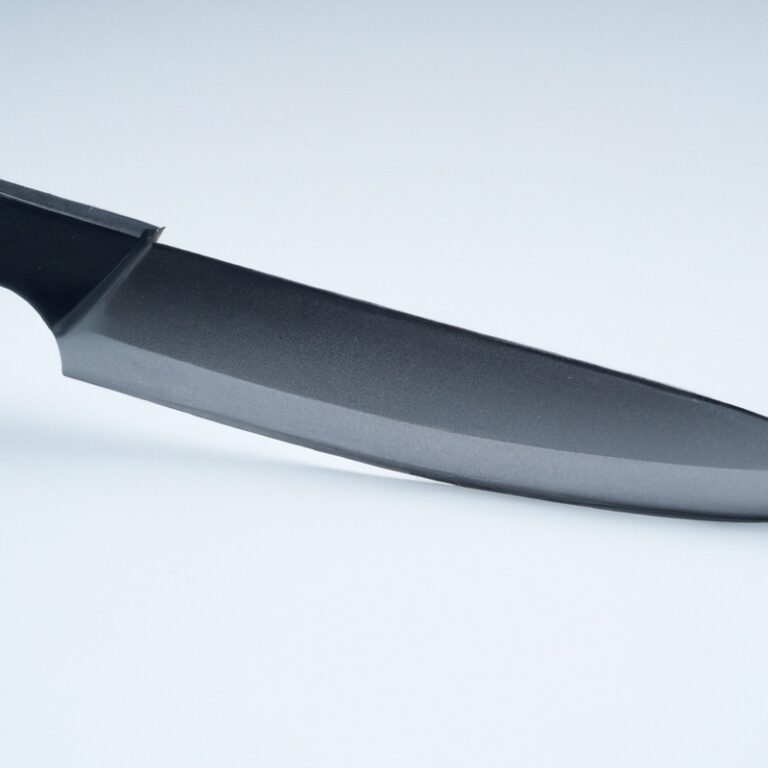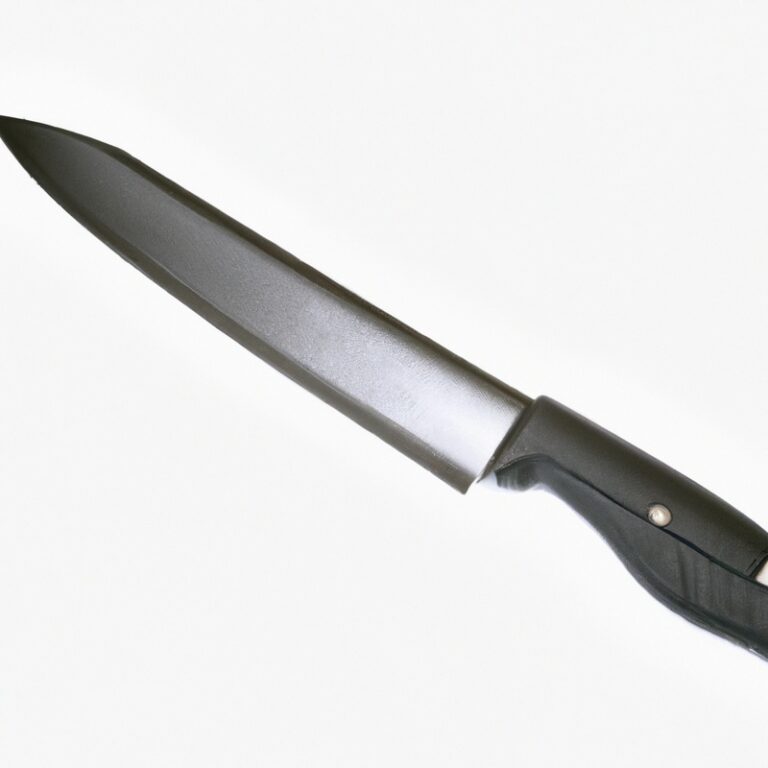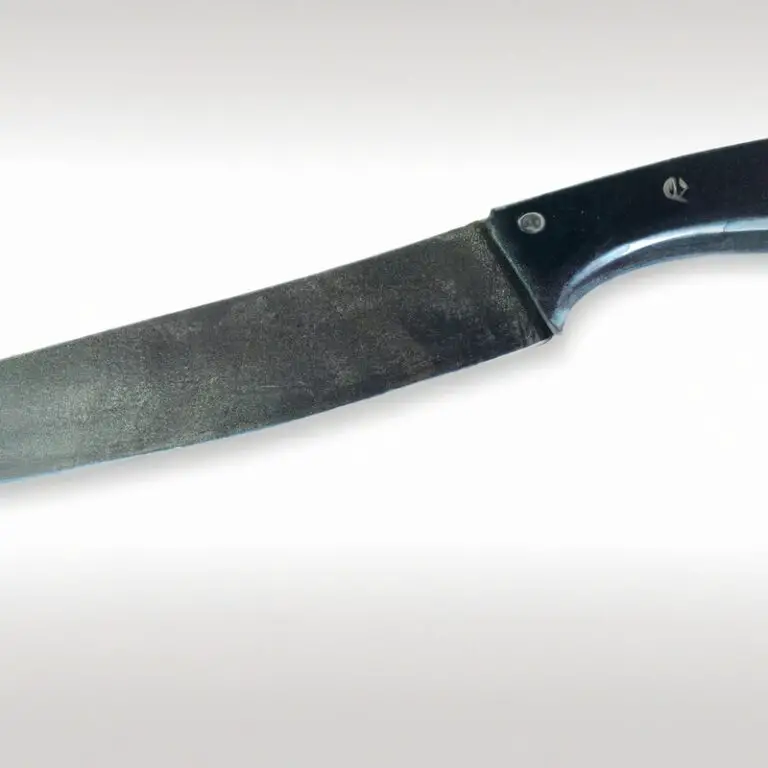How Do I Choose The Right Serrated Knife For My Kitchen?
Key Takeaways:
- Consider the intended use and choose a serrated knife with an appropriate blade length.
- Look for a serrated knife with a comfortable and ergonomically designed handle for better control and maneuverability.
- Pay attention to the quality of the serrations and opt for a knife with sharp and evenly spaced teeth for optimal cutting performance.
- Prioritize durable materials and construction when selecting a serrated knife for long-lasting use in the kitchen.
Are you tired of struggling with a dull knife while trying to slice through crusty bread or juicy tomatoes? If so, it’s time to consider investing in a high-quality serrated knife for your kitchen.
Trust me, as a culinary enthusiast, I can assure you that having the right serrated knife can make all the difference in your cooking experience.
In this article, I will guide you through the process of choosing the perfect serrated knife, highlighting the key factors to consider. From blade length and type of serrations to handle design and knife weight, we’ll cover it all.
So, let’s dive in and find the serrated knife that will effortlessly tackle your kitchen tasks!
| Factors to Consider | Types of Serrated Knives |
| Blade Length | Bread Knife, Tomato Knife, Utility Knife |
| Blade Material | Stainless Steel, High Carbon Steel |
| Handle Construction | Riveted, Full Tang, Plastic |
| Tip Type | Pointed, Rounded |
| Teeth Style | Scalloped, Wavy, Saw-Tooth |
| Price Range | Budget, Mid-Range, High-End |
Why a serrated knife is essential in the kitchen
The benefits of using a serrated knife
A serrated knife has several benefits that make it essential in the kitchen. Firstly, its serrated or saw-like edge helps to easily slice through tough and crusty foods such as bread and tomatoes.
The serrations grip the food’s surface, allowing for a smooth and clean cut without crushing or tearing.
Secondly, the unique design of a serrated knife makes it ideal for cutting through soft foods with delicate textures. The pointed serrations reduce the amount of pressure needed to slice through items like cakes or pastries, ensuring that they maintain their shape and presentation.
Thirdly, the teeth on a serrated knife create small points of contact with the food, minimizing friction and reducing the amount of sticking that occurs.
This is particularly useful when cutting through sticky or dense foods like cheese or melons. Using a serrated knife provides precision and control, allowing you to make clean cuts with minimal effort.
Plus, the serrated edge can retain its sharpness for a longer period of time compared to a straight-edged knife, reducing the need for frequent sharpening.
Types of tasks ideal for a serrated knife
A serrated knife is perfect for slicing through tough or crusty surfaces. Here are some tasks where a serrated knife shines:
- Cutting bread: A serrated knife’s sharp teeth grip the crust while cutting through soft bread without squashing it.
- Slicing tomatoes: The saw-like edge of a serrated knife smoothly cuts through the delicate skin of tomatoes without squishing the flesh.
- Carving roasts: The serrated edge helps to maintain neat slices when cutting through meats with a crispy exterior.
- Slicing cakes: A serrated knife ensures clean cuts through delicate cakes without causing excessive crumbling or squishing.
- Dividing melons: The serrated edge of a knife makes it easier to cut through the tough rind and juicy flesh of melons with precision.
These are just a few examples, but a serrated knife can be handy for any task that requires cutting through tough or delicate surfaces without crushing or tearing them.
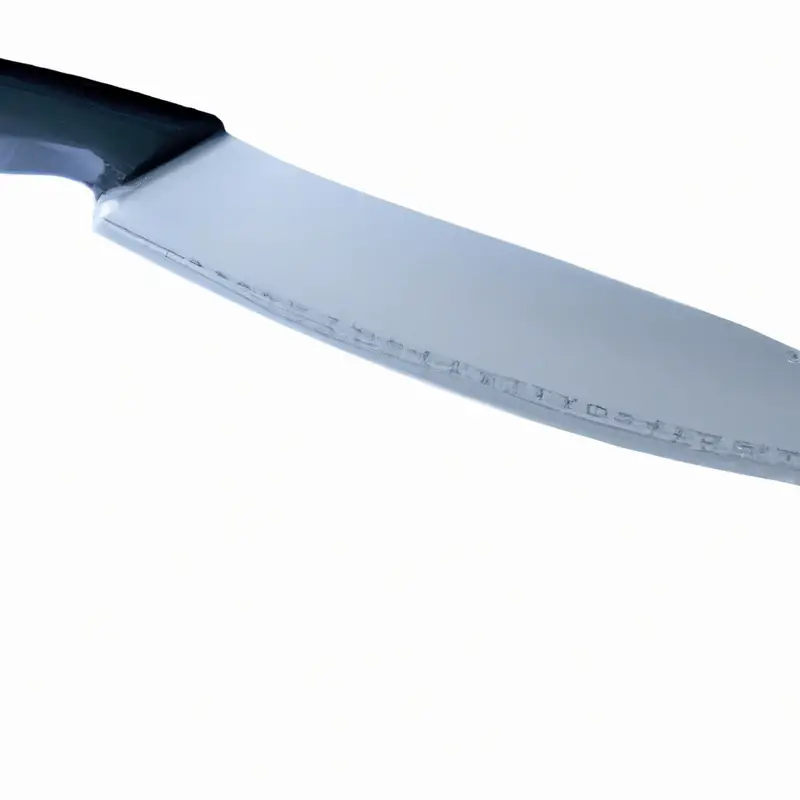
Factors to consider when choosing a serrated knife
Blade length and thickness
When choosing a serrated knife, the blade length and thickness are important factors to consider. The blade length determines the knife’s versatility and ability to handle different tasks.
Longer blades are ideal for slicing large loaves of bread or cutting through thick-skinned fruits.
On the other hand, shorter blades are more maneuverable and easier to control when cutting smaller items like tomatoes or citrus fruits. The thickness of the blade also plays a role in the knife’s performance.
Thicker blades tend to be sturdier and can handle tougher and denser materials.
Thinner blades, on the other hand, are better suited for delicate tasks that require precision and finesse. Ultimately, the choice of blade length and thickness will depend on your specific needs and preferences in the kitchen.
Consider the types of ingredients you frequently work with and the tasks you often perform.
By selecting the right blade length and thickness, you’ll ensure that your serrated knife is well-suited to your cooking style and needs.
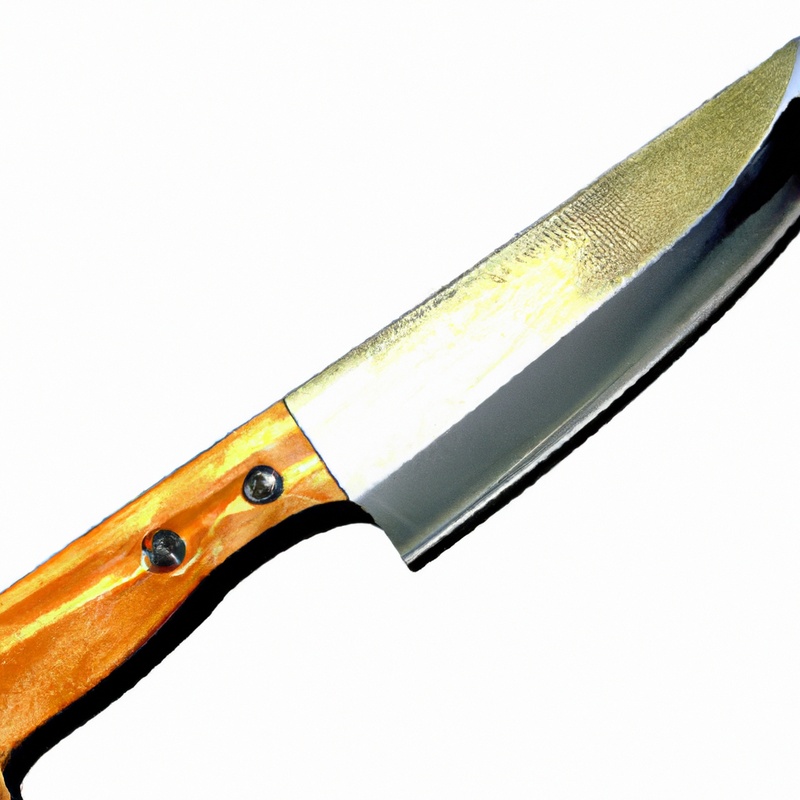
Type of serrations
When it comes to serrations on a knife, there are a few different types to choose from. Each type of serration has its own advantages and is better suited for certain tasks.
- Scalloped serrations: These serrations have a curved, scalloped shape. They are ideal for slicing through bread without crushing it or tearing the crust. The curved shape allows for smooth, clean cuts.
- Wavy serrations: Wavy serrations have a continuous, wave-like pattern. They are commonly found on steak knives and are excellent for cutting through meat with ease. The wavy pattern helps the knife glide through meat without tearing or shredding it.
- Sawtooth serrations: Sawtooth serrations have sharp, triangular-shaped teeth. They are commonly used on tomato knives and are perfect for piercing the tough skin of tomatoes and other fruits or vegetables. The sharp teeth grip the skin, allowing for precise cutting without squishing the flesh.
Ultimately, the type of serrations you choose will depend on the specific tasks you’ll be using the knife for. Consider the types of food you frequently prepare and select a serrated knife that suits your needs best.
Handle design and material
When it comes to choosing a serrated knife, the handle design and material are important factors to consider. The handle should be comfortable to grip and provide good control while cutting.
Look for handles that are ergonomic and have a non-slip texture to prevent accidents.
The material of the handle should be durable and easy to clean. Common materials include plastic, wood, and stainless steel.
It’s a personal preference, so choose the one that feels right in your hand.
Just make sure the handle is well-constructed and securely attached to the blade for long-lasting performance.
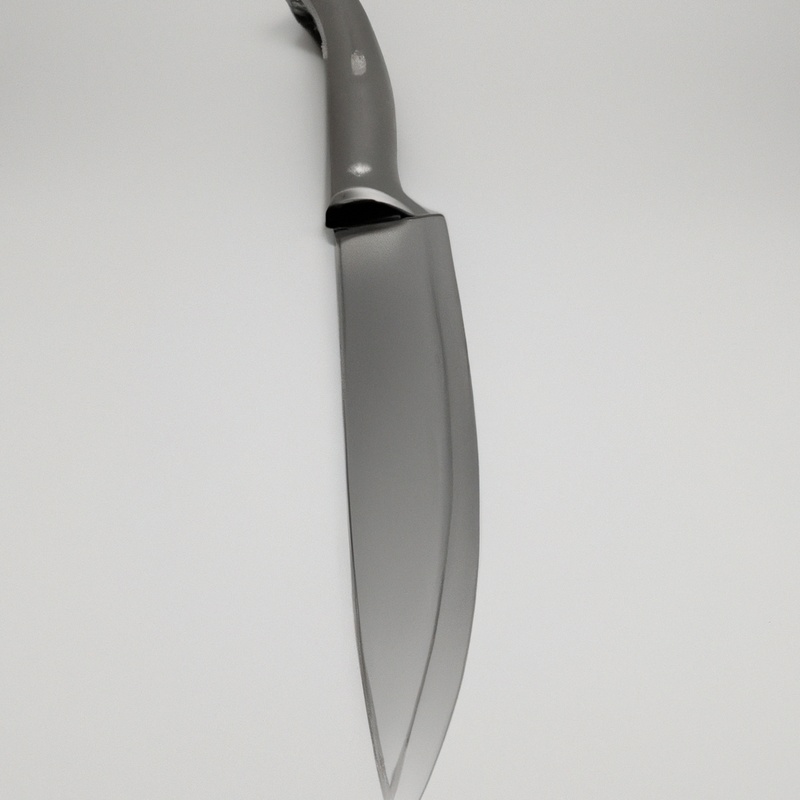
Knife weight and balance
When considering a serrated knife, one important factor to evaluate is the knife’s weight and balance. The weight of the knife refers to how heavy or light it feels in your hand.
It’s essential to choose a knife that feels comfortable and balanced when you hold it.
A knife that is too heavy may be difficult to control, while a knife that is too light may lack stability. A well-balanced knife is one that evenly distributes its weight between the handle and the blade.
This balance ensures that the knife feels steady and controlled during use, reducing the strain on your wrist and improving your cutting precision.
You can test the balance of a knife by holding it at different points along the handle and assessing how it feels in your hand. When selecting a knife, consider your own personal preferences and the tasks you will be using it for.
Some people may prefer a heavier knife for tasks that require more force, while others may prefer a lighter knife for tasks that require more finesse.
Ultimately, the right weight and balance will depend on your individual needs and comfortable grip. Remember to consider the weight and balance of a serrated knife when choosing the right one for your kitchen.
Aim for a knife that feels comfortable and balanced in your hand to ensure optimal performance and enjoyable cooking experience.
Different types of serrated knives
Bread knives
Bread knives are designed specifically for slicing through bread and other baked goods. They have a long, serrated blade that easily cuts through crusty exteriors without squishing the soft interiors.
The serrated edge helps grip the bread, allowing for clean and precise cuts.
When choosing a bread knife, consider the length and thickness of the blade. Longer blades are better for larger loaves, while shorter blades work well for smaller breads.
The thickness of the blade should be sturdy enough to handle the pressure needed to cut through crusts.
Another factor to consider is the type of serrations on the blade. Some bread knives have large, deep serrations, while others have smaller and more frequent serrations.
The size and spacing of the serrations can affect the knife’s performance and the texture of the cut.
Experiment with different types to find the one that suits your needs best. The handle design and material are also important considerations.
Look for a comfortable grip that allows you to maintain control while cutting.
Handles made from materials like wood, plastic, or stainless steel all have their own advantages, so choose one that feels comfortable and suits your preferences. Weight and balance are additional factors to keep in mind.
A well-balanced knife will feel comfortable and stable in your hand, making it easier to use.
Consider the weight of the knife and how it feels when you hold it. Overall, when selecting a bread knife, it’s important to choose one that suits your needs and preferences.
Try out different styles and brands to find the one that feels comfortable and gives you the cleanest cuts.
Tomato knives
Tomato knives are specifically designed to effortlessly cut through the delicate skin and juicy flesh of tomatoes. They have a serrated edge that allows for clean and precise slicing without squishing or damaging the fruit.
The serrations grip the tomato’s skin, preventing the blade from slipping and ensuring a smooth cut.
One important feature to look for in a tomato knife is the length of the blade. It should be long enough to easily slice through a tomato without requiring excessive pressure.
A blade length of around 5 to 6 inches is generally ideal for most tomato cutting tasks.
Another factor to consider is the thickness of the blade. Tomato knives with thinner blades tend to be more effective at slicing through the thin skin of tomatoes without crushing the flesh.
Thicker blades may require more force, which can lead to messy and uneven cuts.
When selecting a tomato knife, pay attention to the design and material of the handle. Look for a comfortable grip that allows for precise control and reduces hand fatigue.
Handles made of materials such as wood, plastic, or rubber can provide a non-slip grip, ensuring safety and ease of use.
Keep in mind that the weight and balance of the knife can also affect its performance. A well-balanced tomato knife will feel comfortable and stable in your hand, making it easier to slice through tomatoes smoothly and evenly.
Steak knives
Steak knives are an important tool in every kitchen, especially if you enjoy cooking and eating steaks or other types of meat. These knives are specifically designed to cut through meat with ease, thanks to their sharp serrated edges.
The serrations help to grip the meat and make clean cuts, without tearing or shredding the meat fibers.
When choosing steak knives, it’s important to consider the blade length and thickness. Longer blades are generally better for larger cuts of meat, while shorter blades are more suitable for smaller cuts or individual servings.
The thickness of the blade also affects the knife’s performance.
Thinner blades tend to be more agile and versatile, while thicker blades provide more stability and durability. The type of serrations on the blade is another factor to consider.
Some steak knives have serrations with pointed teeth, while others have rounded teeth.
Pointed serrations are better for cutting through tough meat, while rounded serrations are gentler on delicate cuts. It’s a matter of personal preference and the types of meat you usually prepare.
The handle design and material are also important considerations.
Look for steak knives with comfortable, ergonomic handles that offer a secure grip. Handles made from durable materials like wood or stainless steel are recommended for long-lasting performance.
Lastly, consider the weight and balance of the knife.
A well-balanced steak knife should feel comfortable in your hand and allow for precise control while cutting. Test the knife’s weight and balance before making a purchase.
Tips for selecting the right serrated knife
Consider your cutting needs
Consider your cutting needs when choosing a serrated knife. Think about the types of foods you will be cutting most frequently.
If you often bake bread, a serrated bread knife would be a great choice.
For slicing tomatoes or other delicate fruits and vegetables, a serrated tomato knife would be ideal. If you frequently enjoy steak, a serrated steak knife would be perfect for effortlessly cutting through the meat.
Evaluating your cutting needs will help you select the right serrated knife for your kitchen.
Test the knife’s comfort and grip
When choosing a serrated knife for your kitchen, it’s important to test the knife’s comfort and grip. This will ensure that you can use the knife with ease and have better control while cutting.
Before purchasing a serrated knife, hold it in your hand and see how it feels.
Pay attention to the weight of the knife and make sure it feels balanced. A knife that is too heavy or unbalanced can be difficult to maneuver and may cause discomfort during prolonged use.
Next, check the handle of the knife.
It should feel comfortable in your hand and provide a secure grip. Look for a handle material that is non-slip and ergonomic, such as rubber or textured plastic.
This will help prevent the knife from slipping out of your hand while cutting.
Additionally, consider the size and shape of the handle. It should fit comfortably in your hand, allowing you to have a firm grip and control over the knife.
Remember, a comfortable and secure grip will make your cutting tasks easier and safer.
To test the comfort and grip of a serrated knife, try mimicking different cutting motions. See if the knife feels natural and comfortable in your hand.
Does it require too much effort to hold and control?
If so, it may not be the right choice for you. By ensuring that the serrated knife feels comfortable and provides a secure grip, you’ll be able to work confidently in the kitchen and enjoy the benefits of using a high-quality knife.
So take the time to test the knife’s comfort and grip before making your final decision.
Assess the knife’s overall quality
Assessing the overall quality of a serrated knife is essential to ensure its performance and durability. Look for a knife with a sturdy and well-balanced construction.
Check if the blade is made of high-quality stainless steel and has a serration pattern that is sharp and evenly spaced.
Consider the handle design and material – it should provide a comfortable and secure grip. Pay attention to the weight of the knife, as it should feel balanced in your hand.
Lastly, verify the reputation and reviews of the brand to ensure you’re getting a reliable and long-lasting knife.
By assessing these factors, you can choose a serrated knife that meets your needs and will last for years in your kitchen.
Care and maintenance for serrated knives
Proper storage for serrated knives
Proper storage for serrated knives is essential to ensure their longevity and maintain their sharpness. To keep your serrated knives in top condition, follow these simple storage guidelines:
- Use a knife block or a knife magnet: Storing your serrated knives in a knife block or using a knife magnet is a great way to protect the blades and prevent them from coming into contact with other kitchen utensils. This also reduces the risk of accidents or injuries when reaching for a knife in a drawer.
- Individual blade protectors: If you prefer to store your knives in a drawer, consider using individual blade protectors. These protective sleeves or sheaths provide a barrier between the serrated blade and other cutlery items, preventing any accidental damage or dulling of the edge.
- Avoid storing knives loose in a drawer: It is important to avoid storing serrated knives loosely in a drawer without any protection. This can lead to the blades rubbing against other objects, causing them to become dull or damaged. Moreover, reaching into a drawer without protection can be dangerous.
- Keep knives in a dry environment: Moisture can cause rust and corrosion on the blades of your serrated knives. It is crucial to store them in a dry environment to prevent any damage. Make sure the knives are completely dry before storing them to maintain their quality.
- Store knives away from children’s reach: Safety is paramount, especially when it comes to sharp objects like knives. Ensure that your serrated knives are stored in a location that is inaccessible to children to prevent any accidents. Consider using childproof locks on cabinets or higher storage areas.
Cleaning and sharpening techniques
Cleaning and sharpening your serrated knife is essential for its longevity and performance. To clean your knife, start by rinsing it under warm water to remove any food particles.
Then, use a small brush or toothbrush to gently scrub the serrated edges, being careful not to apply too much pressure.
Avoid using abrasive cleaners or harsh chemicals, as they can damage the blade. After cleaning, it’s important to dry the knife thoroughly to prevent rust.
Use a clean cloth or towel to wipe away any moisture, paying extra attention to the serrated edges.
Once dry, store the knife in a safe place, away from other utensils that may cause damage. Sharpening a serrated knife is a bit different from sharpening a regular knife.
You will need a sharpening rod or a serrated knife sharpener specifically designed for serrated blades.
Hold the rod or sharpener at an angle that matches the serrations and gently move it back and forth along each serration. Repeat this process for each serration until the edge feels sharp.
Be careful not to over-sharpen, as it can affect the performance of the knife.
Remember to clean and sharpen your serrated knife regularly to keep it in optimal condition. It’s also important to follow the manufacturer’s guidelines for cleaning and sharpening, as different knives may require specific care.
By maintaining your serrated knife properly, you can ensure its longevity and enjoy its excellent cutting performance for years to come.
Budget-friendly options for serrated knives
Affordable serrated knife brands
When it comes to finding affordable serrated knife brands, there are a few options to consider. One popular brand that offers budget-friendly choices is Victorinox.
They are known for their high-quality and durable knives at a reasonable price.
Another brand to consider is J.A. Henckels, which has a range of serrated knives at different price points. Additionally, Mercer Culinary offers serrated knives that are affordable without compromising on quality.
These brands provide great value for money and are worth considering for your kitchen needs.
Best value for money serrated knives
When looking for the best value for money serrated knives, there are a few brands that stand out. One of them is Victorinox.
They offer affordable options without compromising on quality.
Another brand to consider is J.A. Henckels. Their knives are known for their durability and sharpness.
Lastly, Mercer Culinary also offers budget-friendly serrated knives that are well-made and perform well in the kitchen.
So, if you’re on a budget but still want a reliable serrated knife, these brands are worth considering.
Final Verdict
Choosing the right serrated knife for your kitchen is essential for achieving precision and efficiency in various cutting tasks. The benefits of using a serrated knife include its ability to easily slice through tough and delicate foods, while the different types of serrated knives cater to specific culinary needs.
When selecting a serrated knife, factors to consider include blade length and thickness, type of serrations, handle design and material, and knife weight and balance.
Additionally, proper care and maintenance, along with budget-friendly options, ensure that your serrated knife remains sharp and reliable. Happy slicing!

